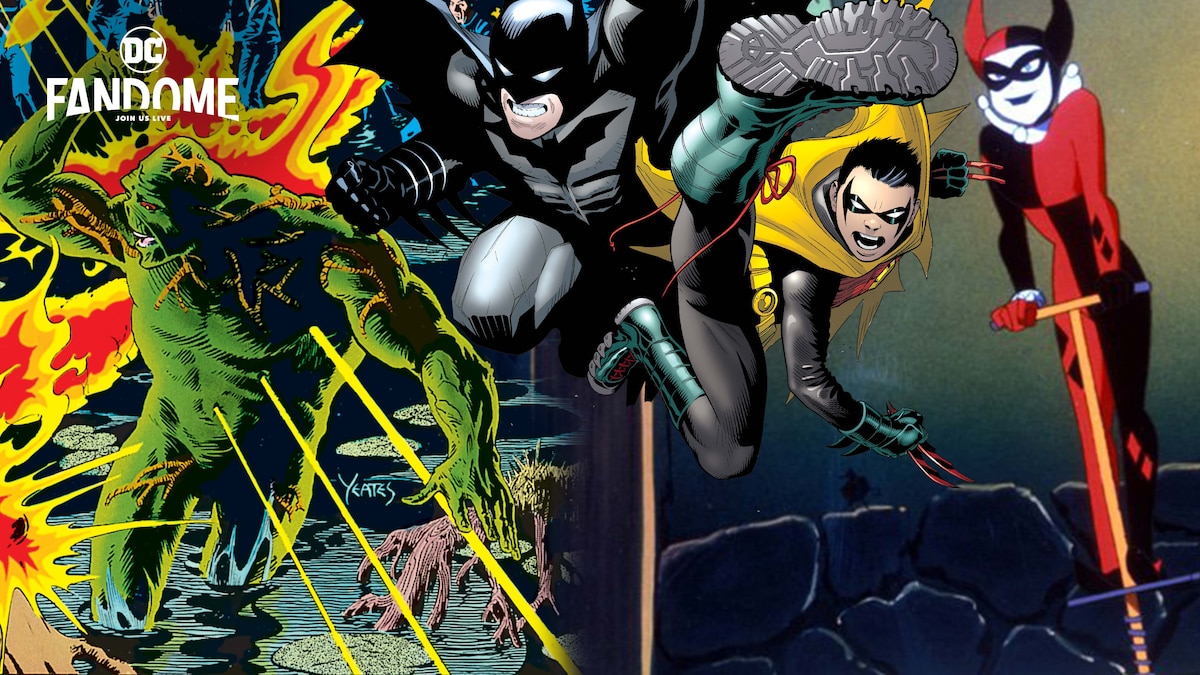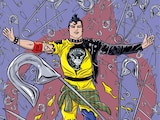As we get ready for DC FanDome, this week we’re recognizing the driving engine which has kept the DC Universe growing and thriving for over eighty years—legacy. Legacy is what passes the heroic mantle from mentor to student, and the passion that transfers from veteran DC fans to the next generation. But DC’s greatest expression of legacy is the spirit of narrative collaboration. Thousands of writers and artists and talents in every creative field have all been working together through generations to tell one big story, which grows and evolves through each new chapter, all while honoring what’s come before. To create a character or a concept is one thing, but to keep that idea alive for generations to come is what really defines DC’s spirit. Here, then, are some of the best to ever do it.
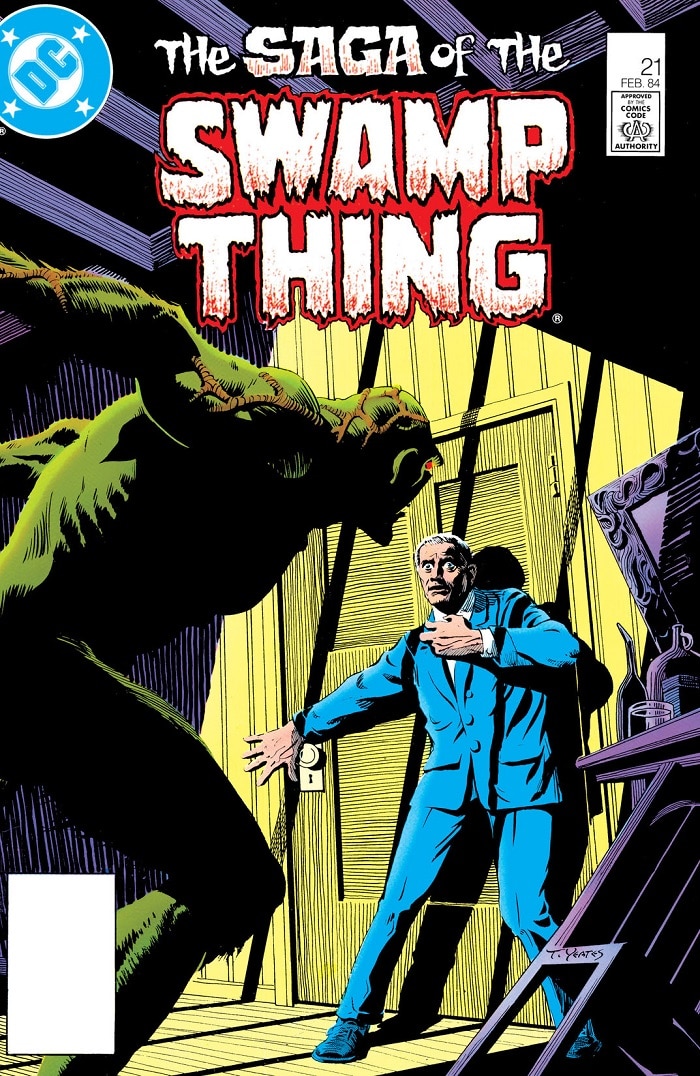
Alan Moore’s Swamp Thing
Swamp Thing was created by Len Wein and Bernie Wrightson for a brief horror story in 1971 and developed into its own series the following year. But it was in 1983 that the character really took off with Alan Moore’s defining take on Dr. Alec Holland. To his credit, Moore didn’t change everything at once. The first issue of his run, Swamp Thing #20, was dedicated to meticulously and satisfactorily closing out the plot threads left by his predecessor on the series, Martin Pasko. This often-overlooked issue is a master class in respect for the work which has come before you, recognizing the readers and talent who dedicated themselves to a story not your own.
It was the next issue, “The Anatomy Lesson,” where Moore turned everything about Alec Holland’s world upside down in a way which didn’t just clear the decks, but miraculously transformed the nature of every Swamp Thing story which had preceded it. Even going in knowing the surprise—that Swamp Thing had, in fact, never been Alec Holland, but a creature with his memories—doesn’t prepare you for the horrifying impact of the story. It’s one that every fan of comics should read as an example of how to fundamentally change a character without breaking that character.
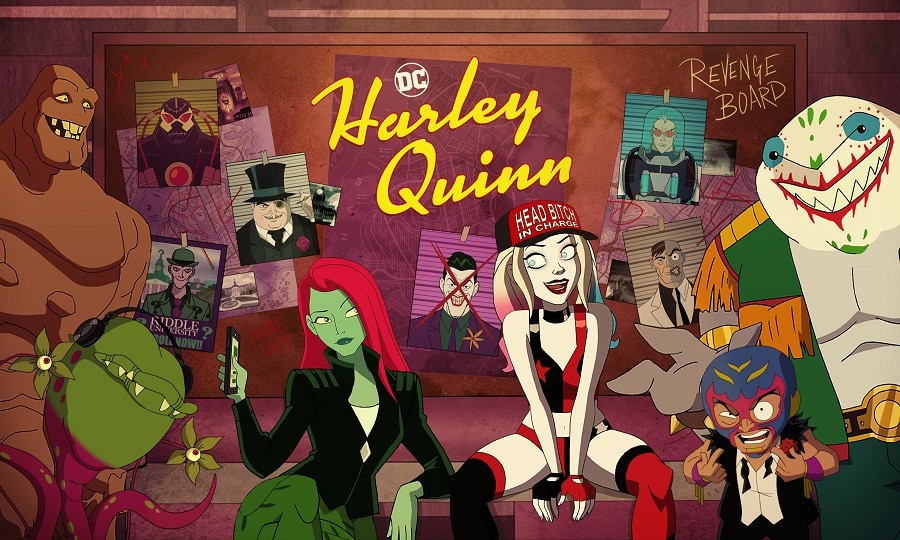
Harley Quinn: The Animated Series
It’s easy to forget, but the extremely popular character of Harley Quinn first got her start on television in 1992, and a major element of what keeps the current award-winning Harley Quinn animated series so great is that it never stops acknowledging that legacy. As a character who has come to be defined by the tug-of-war between her checkered past with the Joker and her passion for frequent partner-in-crime Poison Ivy, the season two episode “All The Best Inmates Have Daddy Issues” is a wonderfully transformative take on Harley’s most iconic story: Bruce Timm and Paul Dini’s Mad Love, which gave Harley her origin story.
Harley Quinn’s updated take reflects on the character as we’ve come to know her much better in the decades which have followed, including a powerful statement on Ivy’s role in Harley’s life from the very start. But Harley’s come a long way since she wore that red and black jumpsuit for her “Mistah J,” and that’s something the show acknowledges as well, borrowing liberally from the character’s independent streak most established in Amanda Conner and Jimmy Palmiotti’s Harley Quinn comics between 2013 and 2020. If you’ve ever wondered who to thank or blame for Sy Borgman, that’s where to direct your letters.
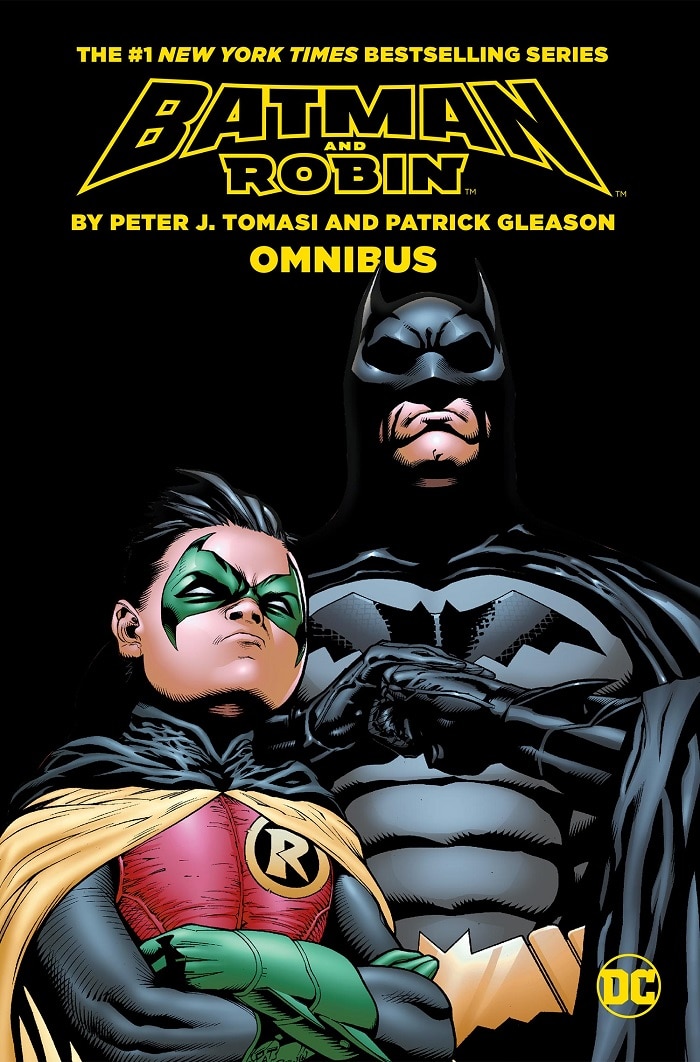
Peter Tomasi and Patrick Gleason’s Batman and Robin
In the first story arc for their eight-year tenure on Batman, writer Grant Morrison changed Batman’s life by introducing him to his biological son, Damian. When Damian first showed up demanding the right to be Robin, well, let’s be honest, he was…a hard kid to love. But even after Morrison began their exit from the Batman title by killing their own Robin off, Damian’s best days were still ahead of him. Morrison’s successor at the Batman and Robin reins, Peter Tomasi, took Batman on a year-long epic quest to the far end of the universe and back to get his son back to him, after which their relationship would change forever.
Damian would grow closer, then farther, from his father and the al Ghul legacy that bore him as he found his own way, and would eventually find true belonging with his friend Jon Kent, the son of Superman, as half of the “Super Sons.” Of all the characters introduced to the Batman mythology over the past ten years, Damian has maintained the most interesting journey of character growth and self-discovery—a process which began in earnest after Damian’s creator had already moved on.

The Suicide Squad
In film, adaptive work is often saddled with the concept of a director’s “creative vision”—the idea being that the concept behind a story from another work isn’t strong enough to stand on its own and must be completely reinvented from the ground up to work “for a different audience.” James Gunn’s The Suicide Squad bucks that trend by gleefully embracing its source material. In fact, after reading the 1987 Suicide Squad comic series, this movie feels like it might as well be the next arc of the comic book. While the film maintains many of Gunn’s signature directorial elements, all of them do their part to serve the chaotic, darkly funny and morally gray-scaled Suicide Squad tradition that its long-term followers have always loved. From the moment we see Suicide Squad co-creator John Ostrander in the film injecting the Belle Reve inmates with explosives, this movie’s status as a love letter to and extension of the Suicide Squad comics is assured.
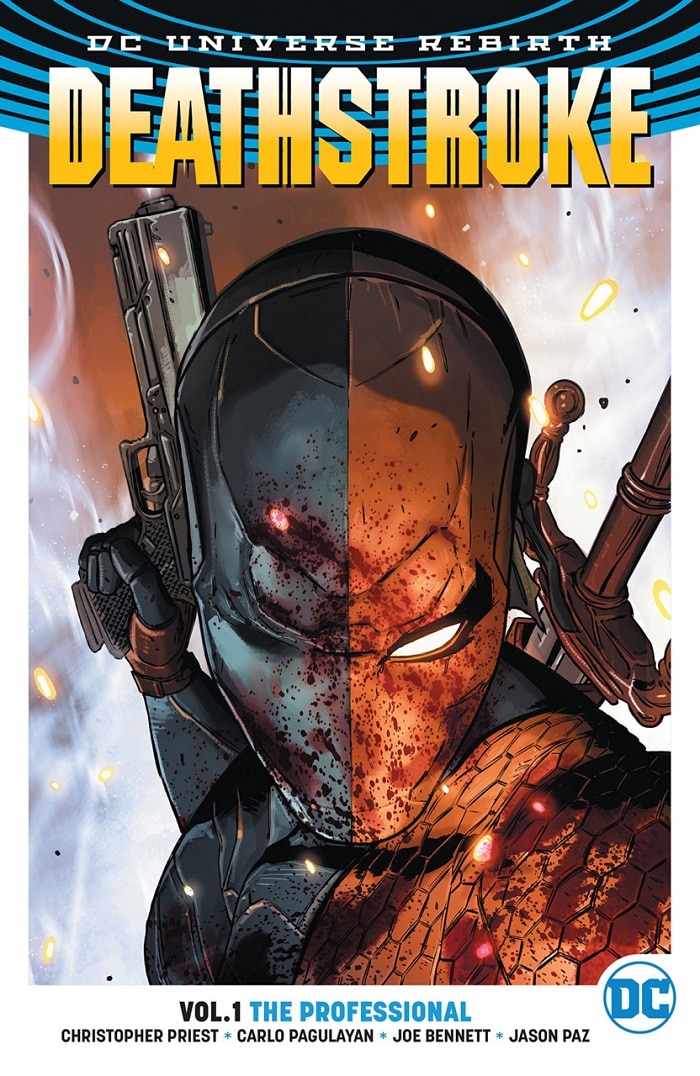
Priest’s Deathstroke
When legendary Steel and Black Panther comic book writer Christopher Priest returned to DC in 2016, it was for a title that nobody expected: an ongoing series featuring DC’s most high profile mercenary and all-time contender for Worst Dad, Deathstroke. There have been plenty of attempts to center Slade Wilson as a protagonist in the past, all to varying degrees of success. But in Deathstroke, Priest wrote one of the best series of DC’s “Rebirth” era by reconnecting with the roots established in the character’s original intention by Marv Wolfman and George Pérez. In short, he made Slade Wilson a bad guy again.
Every Deathstroke solo outing up until that point had the mixed message of trying to carve an “antihero” out of this terrible man. Priest, instead, acknowledged time and again that there was no bar you could set so low that Deathstroke couldn’t slither under it. By exploring his motivation, his long struggling family caught in his grasp and the true consequences of his actions, Priest built a better Deathstroke series than ever before simply by acknowledging what was always there.

The Batman: Arkham Series
Rocksteady’s trilogy of Arkham video games wears its comic book influences on its sleeve. For the first game, it was Morrison and McKean’s Arkham Asylum: A Serious House on Serious Earth. The second, Batman: No Man’s Land. The third, Batman: Under the Red Hood. But the relationship at the core of the series, the legacy it’s truly honoring, is the haunting dynamic between Kevin Conroy’s Batman and Mark Hamill’s Joker first established in Batman: The Animated Series.
Though separated in continuity, and far from the last performance in the roles by either actor, the Arkham games often feel intended to be the final word on a particular version of this rivalry that’s existed since the 1990s. With most of the games written by the animated series’ Paul Dini, this should be no surprise. And yet, while honoring the dynamic they’ve always had, the Arkham games continue to surprise those of us who love nothing more than a Batman and Joker confrontation in delightful and inventive ways. Just because (spoiler alert!) Joker happens to die in the second game, doesn’t mean you should count him out.
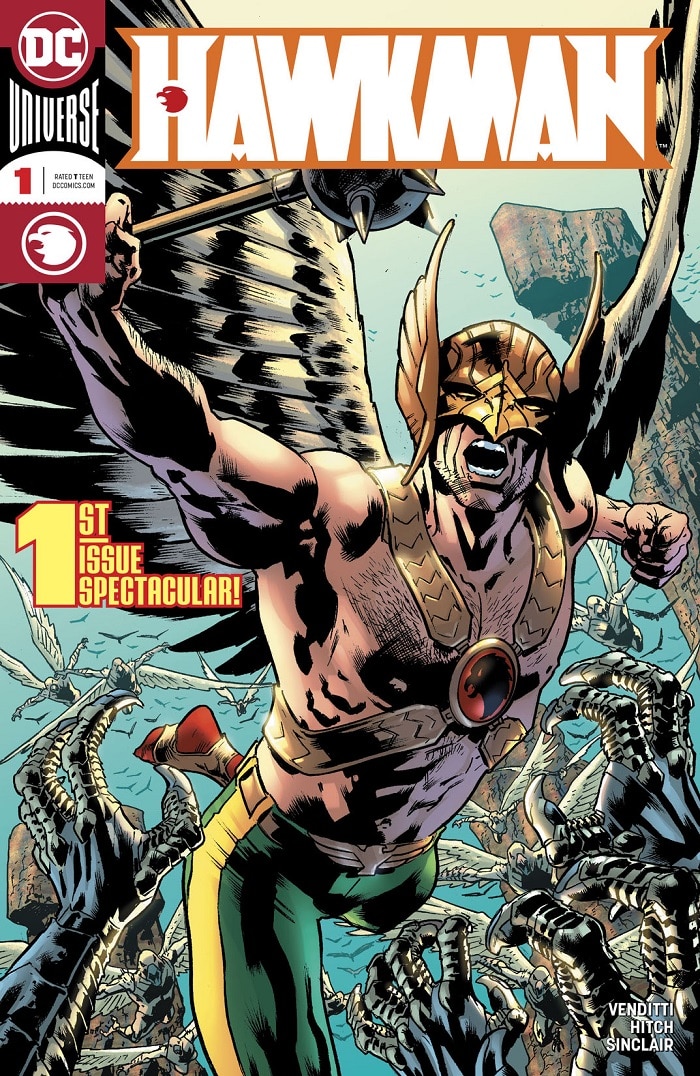
Robert Venditti’s Hawkman
Every fan of DC’s winged warrior has heard the same jokes about him over generations: how between his many origin stories, Hawkman is one of the most convoluted and difficult to parse characters in comics. Is he a pharaoh? Is he an alien? Some kind of hawk avatar sky-god…thing? Every attempt to make sense of Hawkman over the years has done nothing but further complicate who he is until 2018, when Robert Venditti untied that Gordian knot in the simplest and most elegant of ways. In the very first issue of Venditti’s Hawkman, Carter Hall learns that it’s ALL true. The pharaoh bit, the alien bit, even the ancient gods and avatar bits. And it’s all explained in a single moment, which defines the series going forward and retroactively clarifies every Hawkman comic to come before it. Hawkman’s cycles of reincarnations don’t simply occur through time, but through space. And they aren’t necessarily linear. Once you carry that concept in your mind, every Hawkman story is true, and every potential Hawkman story is possible.

Superman & Lois
Just prior to DC’s 2016 “Rebirth” event, writer Dan Jurgens dramatically reinvented Superman as a rural family man, raising a son with his wife Lois on an upstate farm. This isn’t necessarily new ground for the Man of Steel—stories about Superman raising children of his own have dated back to the 1940s. But on TV’s Superman & Lois, DC’s first couple explores that family life with a sustained narrative and depth of exploration not seen in comics (where the status quo of Superman’s personal life is constantly in flux). By exploring the concept of Superman as a family man, Superman & Lois is able to go in narrative directions which directly respect the characters' comic book roots, while sitting with those choices in a way that comics about Clark’s family life usually can’t afford.
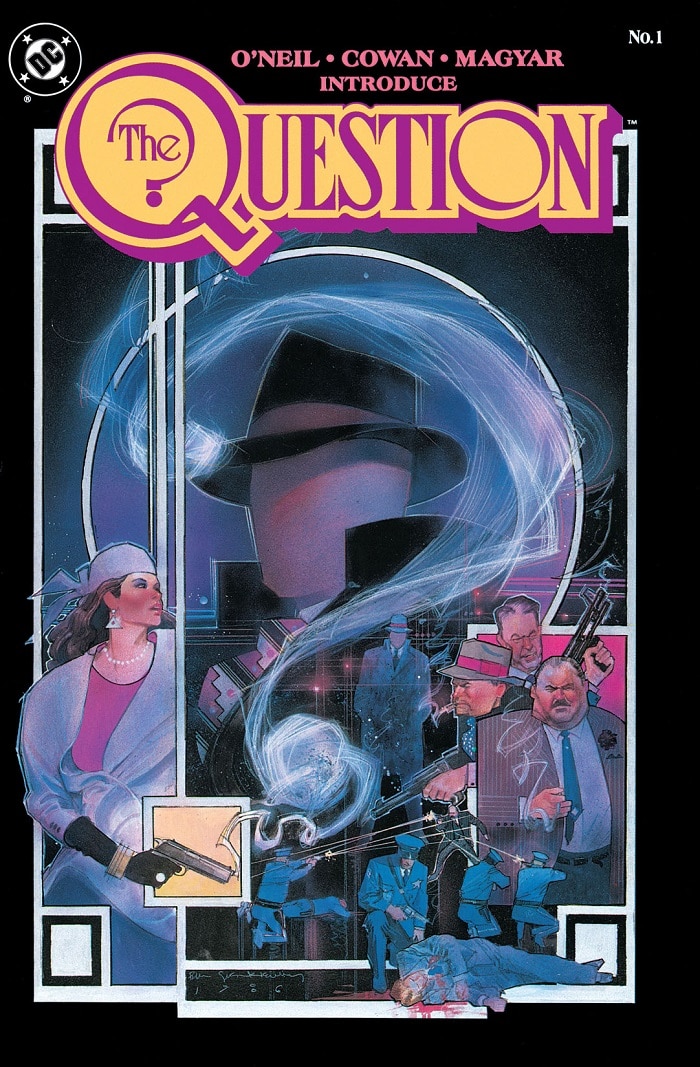
The Question
The Question is a character of consistent reinvention. Originally envisioned by creator Steve Ditko in the ’60s as an icon of objectivism who always saw the world through black and white lines of morality, the Question was inherited by DC in the ’80s and radically reinvented for those times. When writer Denny O’Neil sought to tell a more complex morality tale than the Question’s rigid morality would allow, he didn’t simply change the character to his needs, he challenged the Question with the nuances of life in a real world of crime, corruption and complex characters. The resulting work was one of the highlights of Denny’s illustrious career at DC, all owed to one simple idea—that a character called "The Question" should never stop examining the nature of his reality.

Doom Patrol
The fun of the entire concept of Doom Patrol is that since its inception, it’s basically existed as a dare. Not long after their creation, it was editor Murray Boltinoff who dubbed the team “The world’s strangest heroes!” And every time the torch has been passed on this title, it’s come with one great goal: to live up to that moniker by assembling and exploring a stranger team than has ever before existed.
As the title has passed from the likes of Grant Morrison to Rachel Pollack to Gerard Way to HBO Max, the “beat that” credo that has taken the series to wild frontiers at the fringes of imagination has morphed the Doom Patrol into DC’s closest attempt at pure expressionist, abstract art. Whether the concepts in Doom Patrol are narratively cohesive with the rest of the DC Universe is never as important as the feelings the comic evokes by drawing on imagery and concepts you won’t find in comics anywhere else. In that respect, the true legacy of Doom Patrol is how it continues to reject tradition and embrace the unexpected. And while the TV series certainly draws on its predecessors for inspiration, it’s the manner in which those stories are told which continues to truly carry on the Doom Patrol spirit.
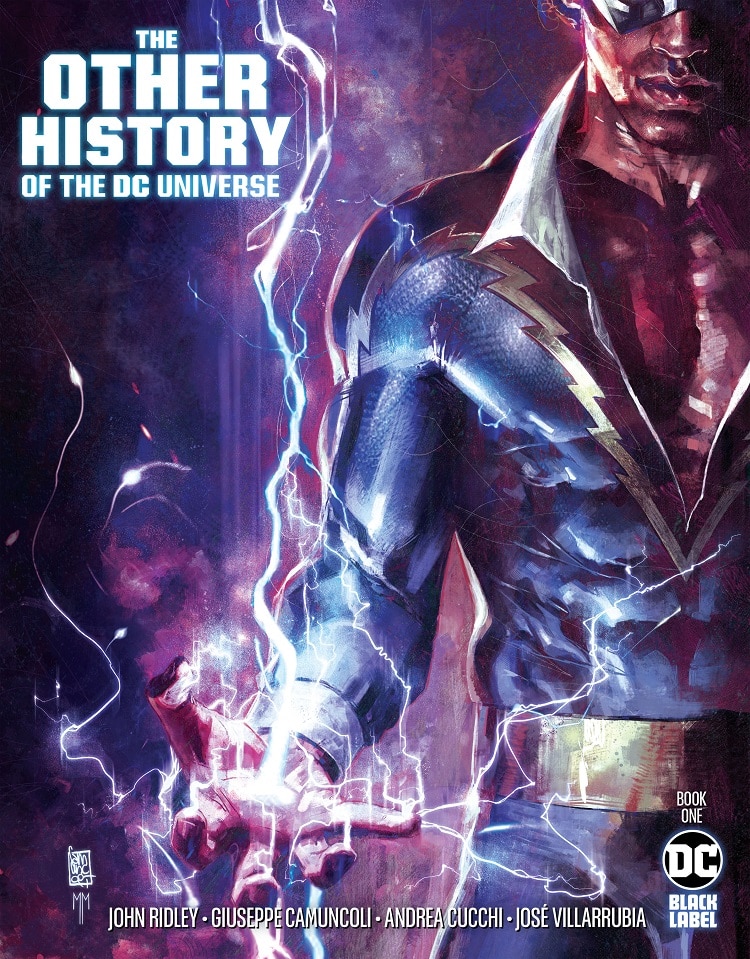
The Other History of the DC Universe
John Ridley’s The Other History of the DC Universe may be the most ambitious title of DC’s Black Label line to date. In the tradition of 1986’s History of the DC Universe, a series that examined the rewritten timeline of DC continuity in the wake of Crisis on Infinite Earths, Other History is a spiritual sequel in the same medium, elaborating on DC history through the all-too-often unexplored lenses of DC’s heroes of color. Black Lightning, Mal Duncan and Bumblebee, Katana, Renee Montoya and Anissa Pierce all get a turn at sharing their own version of historical events, in a devastating weave of DC history and true events which Black, Asian, Queer and Latinx communities have had to face in the second half of the 21st century.
As a whole, Other History is a painstaking exercise in research into each of these characters, turning single issues into important character moments by taking the building blocks afforded to Ridley to build one cohesive narrative arc for each perspective character, all while conveying important messages about race and identity. If ever there was an argument to be made that superhero stories stand for the progression of social justice, The Other History of the DC Universe is the proof.

Batman ’89 and Superman ’78
When Richard Donner set out to make Superman: The Movie in the ’70s, he did so with a one-word creed to which he held the entire production: “Verisimilitude.” Donner recognized even then how important it was for a Superman movie to invoke the feeling of the comics themselves, down to the sheer delight of a man soaring through the sky. Superman was the first comic book film that truly understood and respected its audience, and for that reason it continues to be celebrated to this day. Tim Burton’s Batman, in contrast, represents an entirely different type of legacy, one which draws as much on Burton’s own unique directorial and aesthetic sensibilities as any of Batman’s iconography.
Nevertheless, these two wildly different ideological takes on DC’s biggest heroes have found deep purchase in our collective psyche, further defining Batman and Superman for the generations that have followed. Which is why we’re all delighted that the comics have finally returned us to each of these universes, with a Batman ’89 series by the original film’s screenwriter, Sam Hamm, and perhaps the biggest Batman ’89 fan in comics, Joe Quinones. For a return to Superman ’78, who better to write the series than Robert Venditti, who made us believe that Hawkman could fly?
DC’s creative legacy, as we see here, isn’t just about passing on comic book creative duties from one team to another, or even adapting those comics for TV, film and games. Those reiterative editions can and will continue to influence the comics themselves, as each corner of the DC Multiverse continues to exist in constant conversation with itself. That may be the greatest lesson we can learn from the nature of DC—always keep love in your heart for what’s come before, and an open mind for what’s to come.
DC FanDome returns on October 16, 2021! For more articles like this one, and to stay up to date on all the latest news, visit dcfandome.com.
Alex Jaffe is the author of our monthly "Ask the Question" column and writes about TV, movies, comics and superhero history for DCComics.com. Follow him on Twitter at @AlexJaffe and find him in the DC Community as HubCityQuestion.
